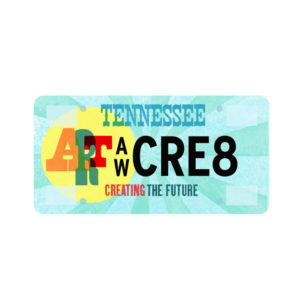INTERVIEW: BETH EDWARDS
JUL. 30, 2025
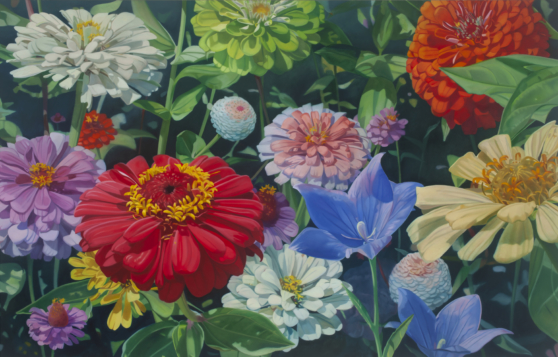
INTERVIEW: BETH EDWARDS
JUL. 30, 2025
Wesley Roden: In an age of short form media, do viewers ever find your work to be refreshing for how it warrants closer inspection? Do you appreciate viewers slowing down?
Beth Edwards: I am heartened by anyone who spends time with my work. I work very slowly. My work builds incrementally over a significant period of time. Every painting, every show, makes me more cognizant of the passage of time. Time is literally embedded in the images.
WR: Seeing the detail in your work, I can imagine the hours spent observing one scene, flower, or single pedal. Do you ever view painting as a practice in viewership?
BE: I wish for people to be as conscious of nature as they possibly can. I hope that the amount of focused attention I spend painting a flower or patch of clover translates into more empathy and concern for the plight of the natural world.
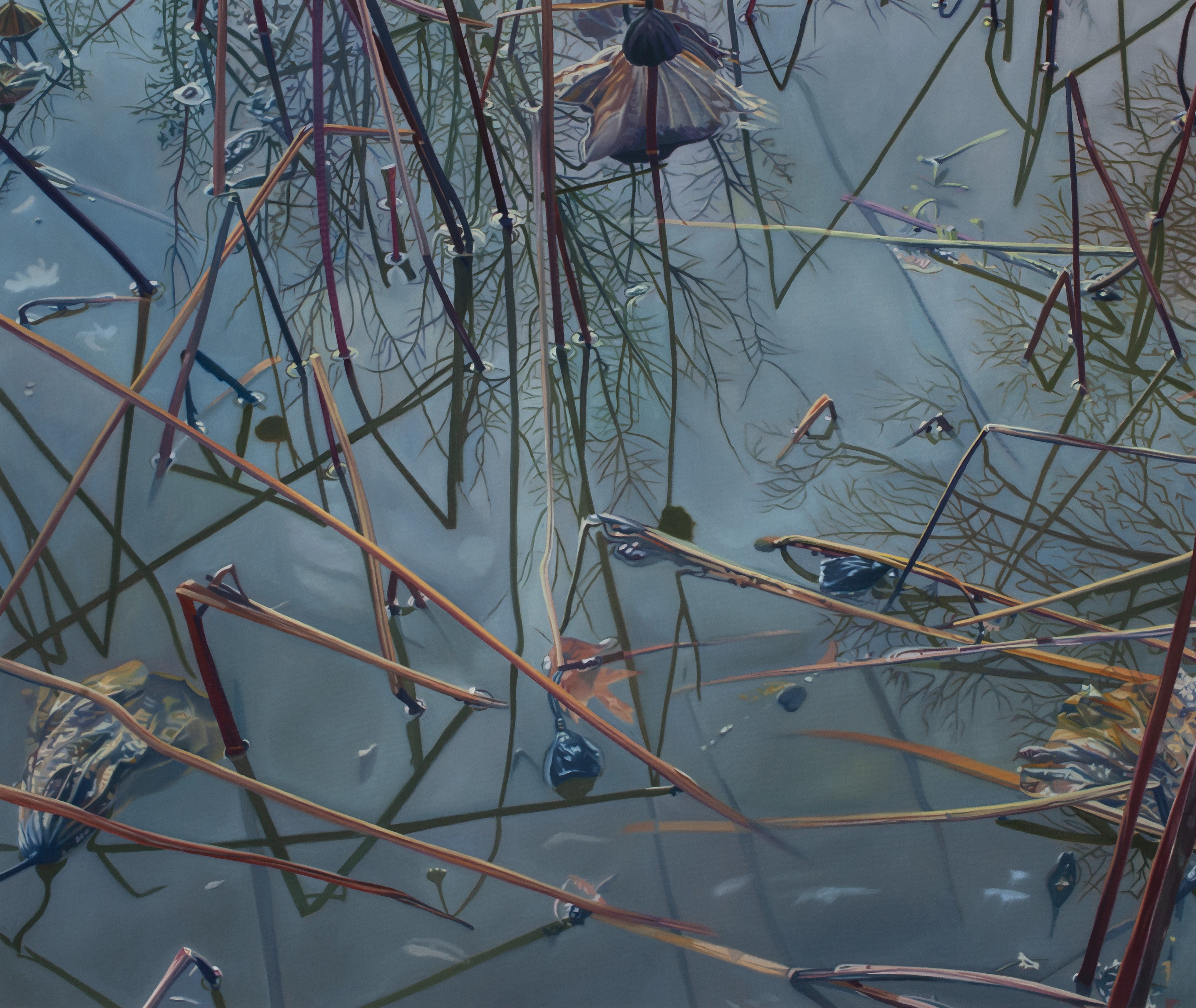
Beth Edwards, Winter Pond I, 2025, oil on canvas, 32" x 38"
WR: How important is time away from the canvas as time outside the studio? Where in the process do you find yourself doubling down over a painting as opposed to taking a step back?
BE: There is almost no time away from a painting until it is done. Since I retired four years ago from teaching, I have painted almost every day except for a few trips. I do not like to leave something hanging, because I am in a different place when I return.
WR: When not producing, how do you receive input? Do you spend time observing your subject matter, take long walks, or simply absorb inspiration from your day to day? What are some creative sources that might be unexpected?
BE: My husband and I walk every day in the Memphis Botanic Garden. Before that we had dogs for many years that we walked in our neighborhood. I loved watching how the homes and gardens reflected the economics of the world. As times became harder, lots of the houses suffered and the gardens were neglected.
There is one type of hydrangea that I use for many of my paintings that is very obscure. It is appropriately named “Phantom”. I recently found several in Central Park in New York City. Everytime I find one, it later disappears. They are weirdly elusive, and unfortunately they are central to my work.
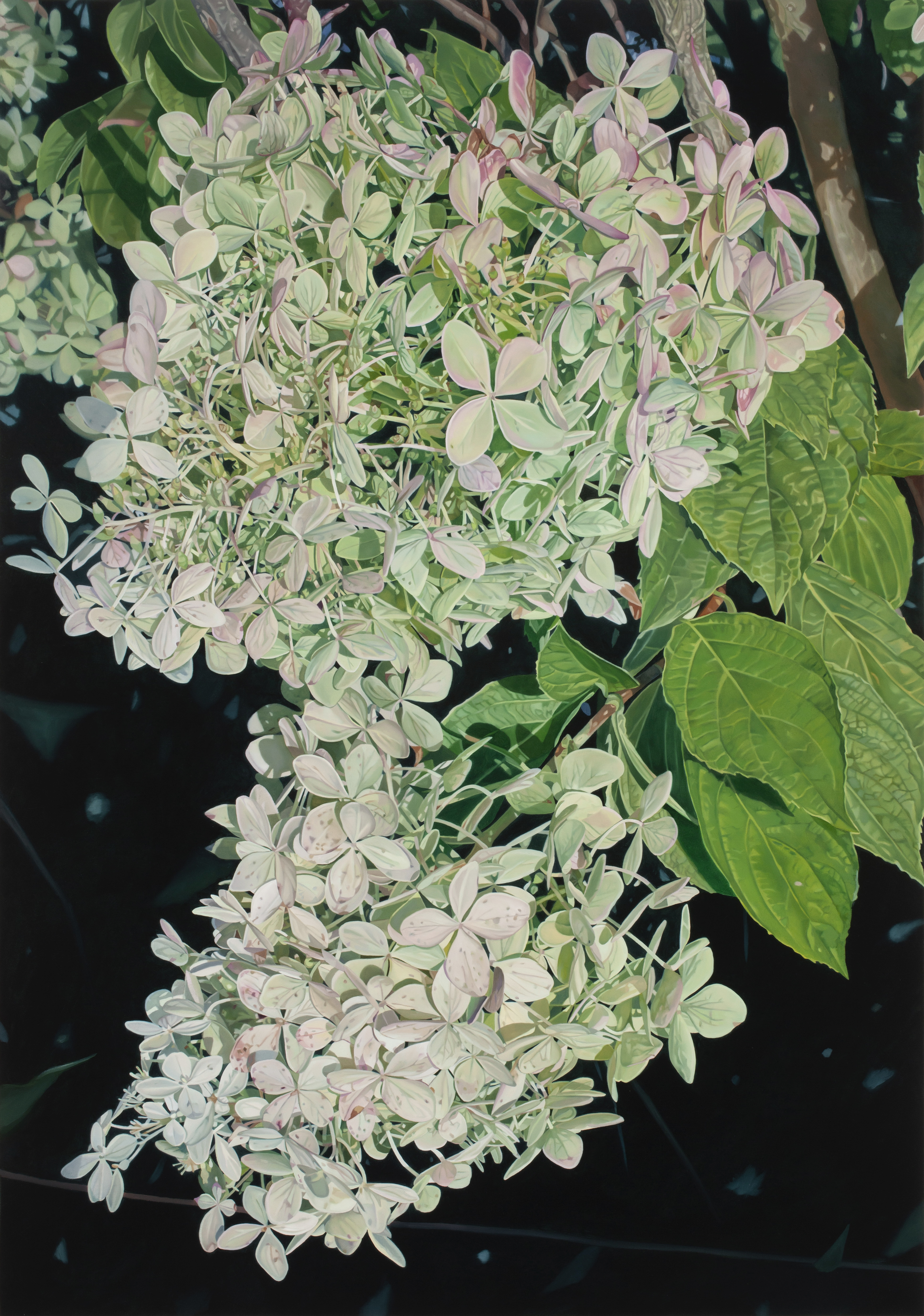
Beth Edwards, Hydrangea XXVII, 2024, oil on canvas, 60" x 42"
WR: Are these plants records of moments, personal symbols, or do they simply hold weight because they are beautiful?
BE: All plants represent a vanitas subject - meaning that they reflect the transience of life. Nature is incredible. The parts of any plant or flower are so intricate when you start to really look at them. The whole enterprise is rather mind blowing.I feel that the hydrangeas and zinnias are two halves of my inner life. The zinnias are exuberant and the hydrangeas are melancholic and quiet. Happy/sad has always been the overall dichotomy in my work.
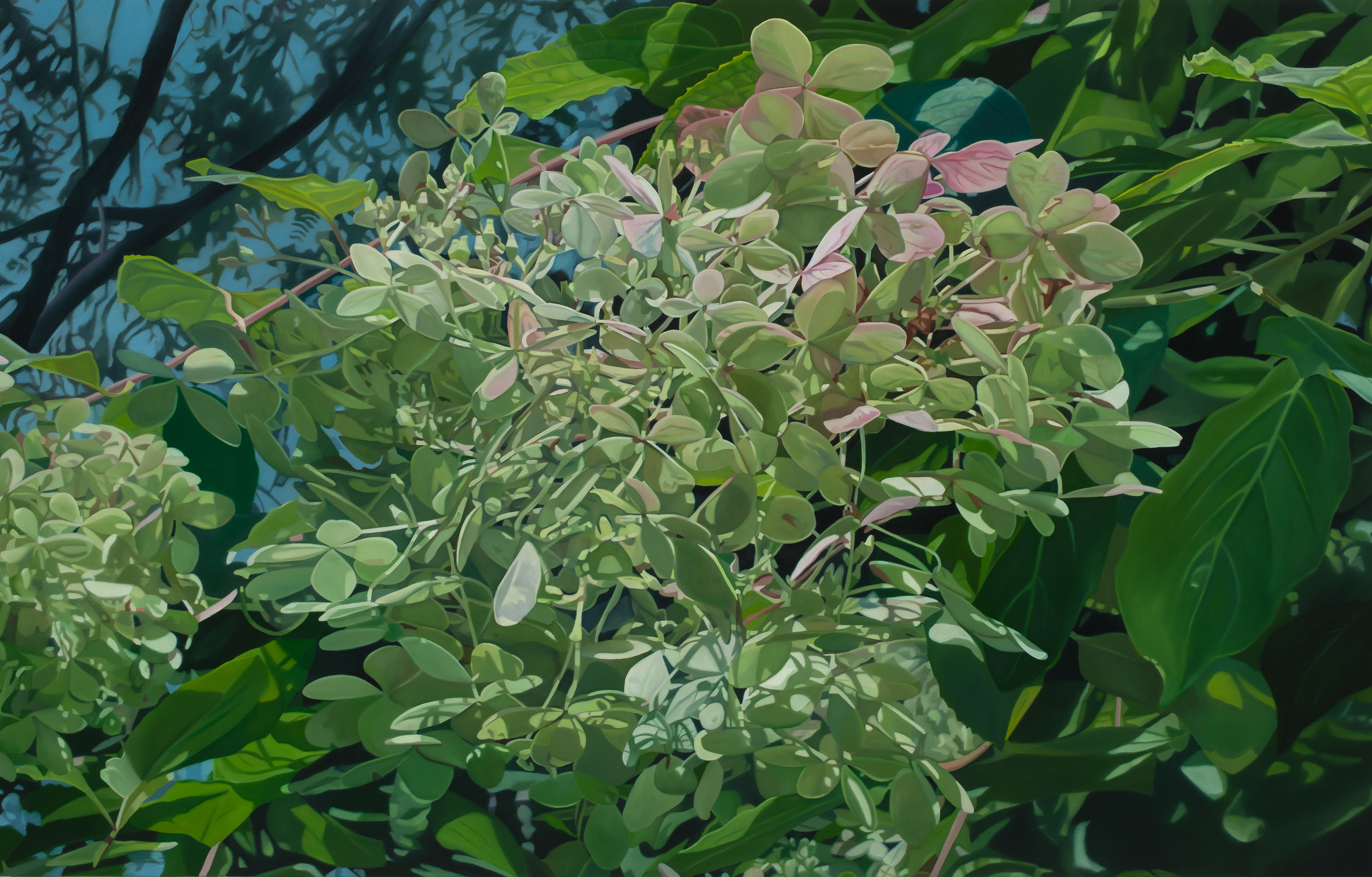
Beth Edwards, Hydrangea XXX, 2025, oil on canvas, 42" x 66"
WR: While many of your works feature the contrasted warm tones of golden hour, some clovers and hydrangeas feature muted cool tones. Do you ever paint with a time of day in mind, and how does a color palette tap into time or emotion?
BE: I try to photograph the plants when there is light hitting them. I like to work with lots of shadows and highlights. They break up the petals and leaves in ways that make them more abstract and increase the overall patterning. I also like dappled light for that reason. Some of the hydrangeas occur in shady locations with light filtering through the tree cover which is ideal for my aims.
WR: Especially in your clover series, do you ever flatten or obfuscate positive and negative space? Can you elaborate on how technique or choice of subject can blur the line between representation and abstraction?
BE: The old saying that reality is abstract is what I live by. I love illusionism, but I see all art as abstract. I am a classic modernist in that way. The clovers are definitely the most abstract of these plant paintings, but yet they still read as what they are. Positive and negative shape relationships are magical. You learn that in Beginning Drawing or Foundation Design and you never see the world in the same way again.
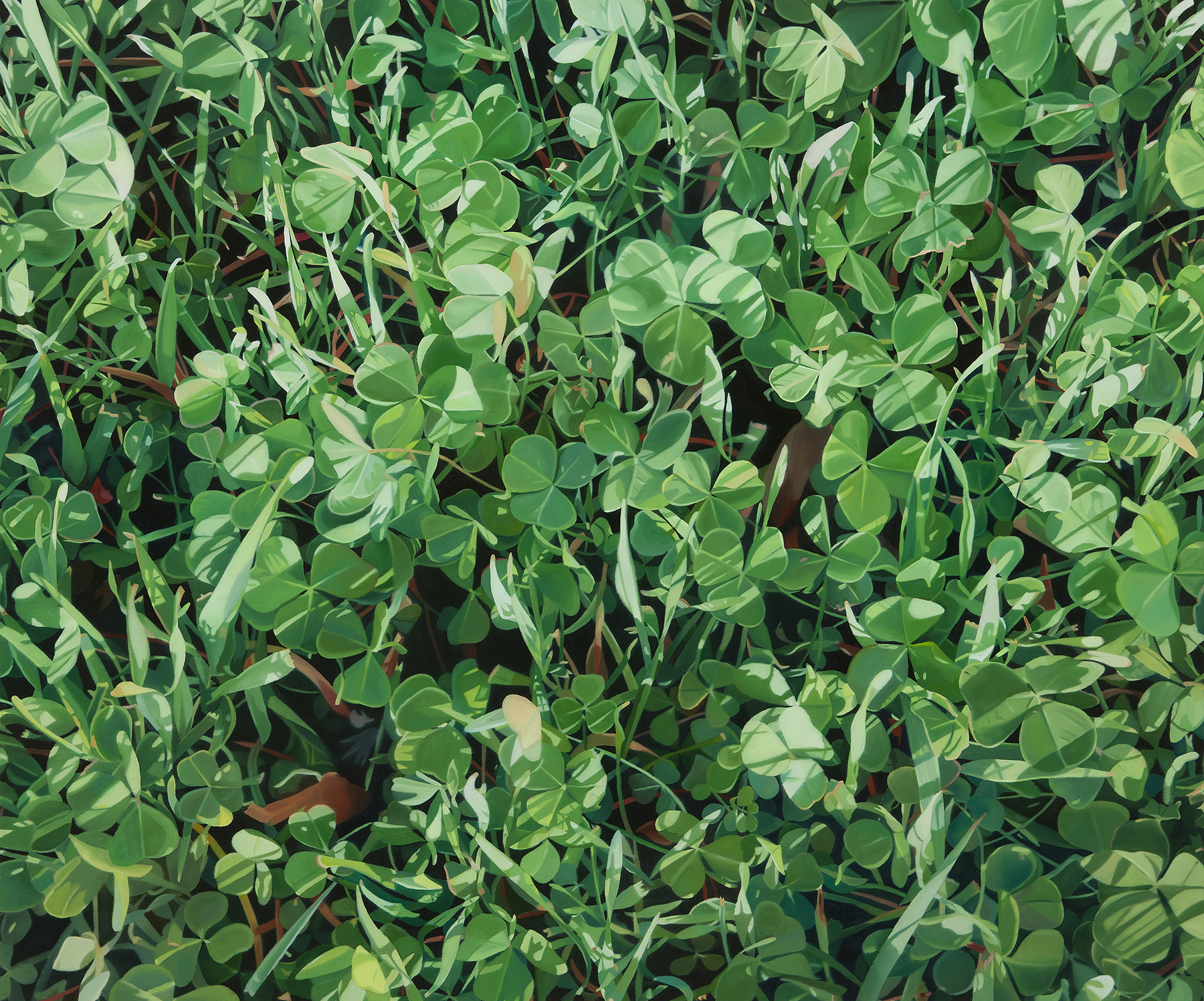
Beth Edwards, Clover XIX, 2019, oil on canvas, 42" x 48"
WR: In later flower paintings, the subject extends to the border of the canvas. Meanwhile, earlier works are often compositionally centered. How does framing affect whether an object is personal, formal, or accessible?
BE: I prefer a taunt composition. When the image is cropped as in the outdoor subjects, I like to put a lot of pressure on the edges by placing important parts of the flowers close to an edge. All of my work is informed by looking at Japanese prints. In the paintings with the clothing, shoes and household objects, I was going for a chart like composition to foster reading the connections between the things. And emptiness (i.e. negative space) is at the heart of all composition. I try to incorporate nothingness into images. Much less now than earlier but it is making a return.

Beth Edwards, Roses for Veda, 2025, oil on canvas, 42" x 60"
WR: I enjoyed that you’ve painted figurines, toys, and various objects with big personality. How do you also attribute personality to shoes, dresses, and other personal objects? Do you paint still lifes as portraits?
BE: Still life is the most underrated genre now and as well as historically. So much can be gleaned from common objects. I cleaned houses for a living for many years - to say that people are reflected in their objects and clothing is an understatement. Those things always tell a story. Most of my work has had a narrative. The plants tell a broader, more universal story of resilience and precarity.
WR: Your paintings of figurines feel playfully cinematic. With toys interacting against dramatically lit backdrops, it’s as if a child’s imagination was given weight. How can painting either ground or aggrandize imagination, story-telling, or silliness?
BE: Fredric Koeppel in the Commercial Appeal once reviewed my character paintings and used the word “goofy” to describe them. I think that was perfect. Silly is probably too light hearted – most of my work has a slightly dark undercurrent.
In terms of imagination, I am affected by the world around me and everything I do draws upon the visual world. I don’t initially come up with an idea and then find the material to illustrate it. I see something, trust my instincts and make a painting from it. I will figure out what it’s about at a later point. The paintings come before the ideas.
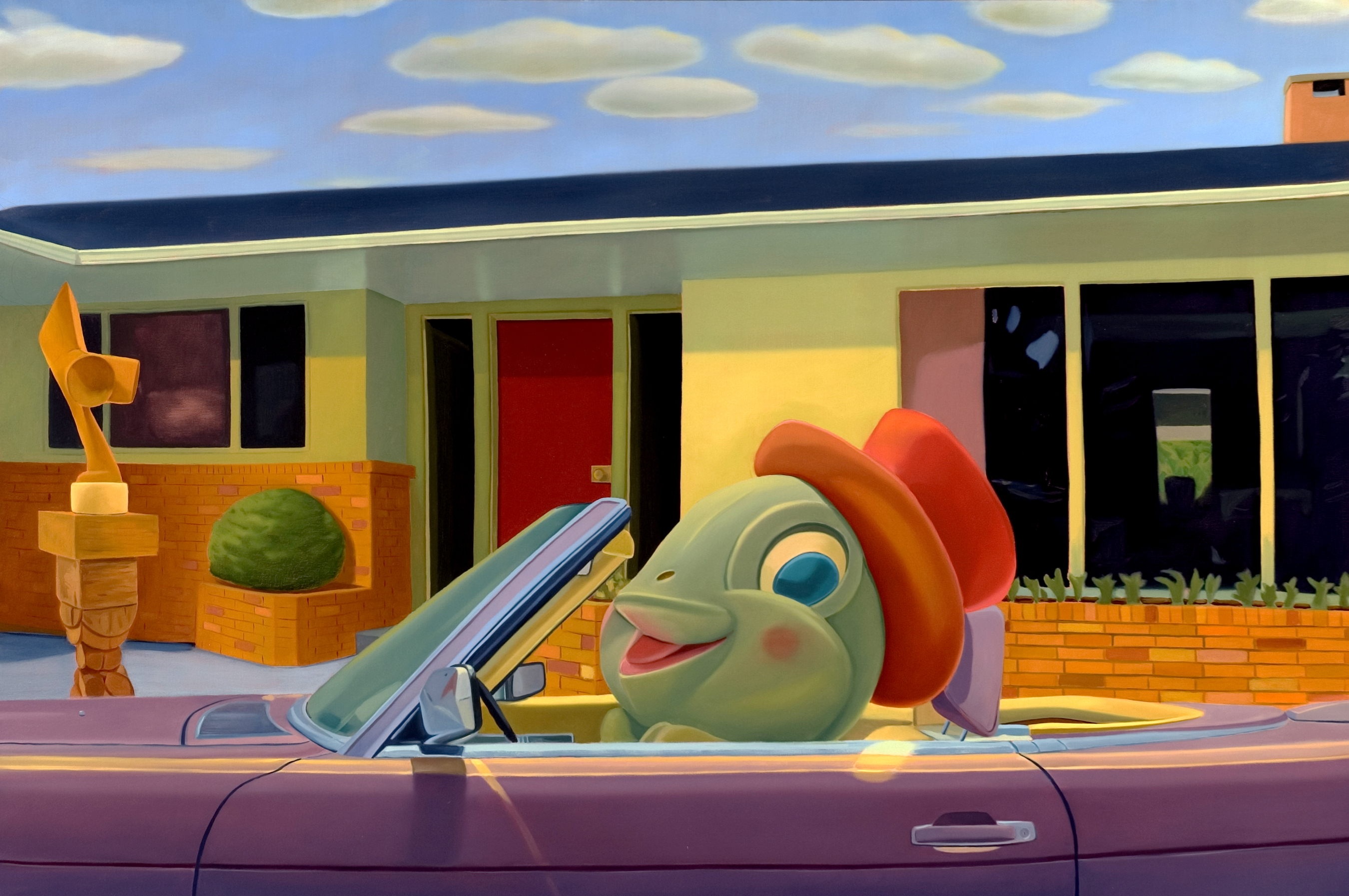
Beth Edwards, Heaven, 2007, oil on canvas, 40" x 60"
WR: Many works show the body indirectly through tension on a tie or grip around a cup. How do these open-ended portraits comment on your, my own, or the viewers’ overlooked experiences of pulling, gripping, or pouring? How can a visual medium lend insight into tactile experience?
BE: I did that series about people interacting with objects in a ritualized, daily activity way. Since most of life consists of this sort of behavior, I wanted to address the invisibility of it in art - except of course for the Dutch 17th century genre paintings. Vermeer probably did it best - a painting fraught with content but of a woman ostensibly reading a letter. I love the understatedness of quotidian experiences.
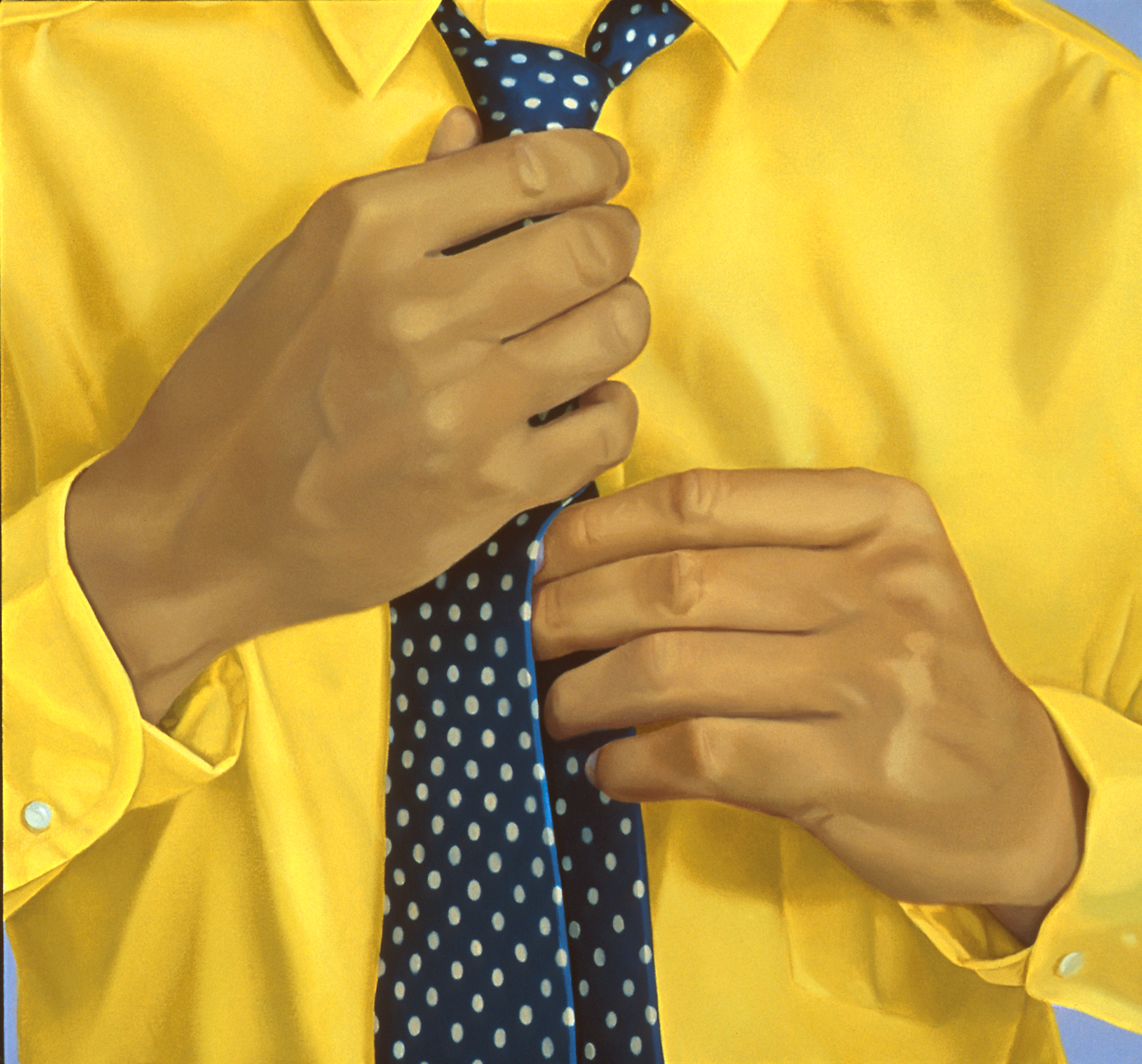
Beth Edwards, Shirt III, 2000, oil on canvas, 18" x 19"
WR: Painting is an old medium, with plants and flora being one of its most familiar subjects. How does the lengthy history of floral paintings inform your work? Do these associations come from deliberate reference or simply by engaging in the age-old tradition?
BE: I have worked in many ways with a bunch of different subjects over the course of painting for over 40 years. Winding up painting flowers was the last thing I ever expected. But I don’t feel I am in control. The work is always taking you where it wants to go. I was painting flowers in conjunction with a series of paintings about happiness when my father, Larry Edwards, a great painter himself, got sick in a way in which we could not stop. He went downhill over the course of nine months and then died. When I went back to painting, the flowers were the right subject to express my grief. Eventually, painting flowers helped me deal with the deaths of both of my parents. The subject of flowers works on lots of levels. They can be elegiac and somber, but they can also express joy and celebration.

Beth Edwards, Flowers in a Vase X, 2025, oil on canvas, 42" x 66"
WR: How do these works evolve or flow into one another? Are there ideas, or modes of making that remain distinct from one another?
BE: One painting leads to the next painting. The work naturally morphs, one into the next. But a painting is often a reaction to the previous painting. If I have made a bunch of paintings with a lot of color, the next few could be with a more limited palette. But of course when a new idea or subject comes along, it can be a bigger departure from the last.
WR: What is the value of rigor? Do you ever prefer an image for its challenge and potential for growth, or do some works simply exist as play?
BE: All painting is hard for me. I have no natural ability. Every painting is a challenge and little by little I am getting slightly better I hope. The play comes about every day. I am so enthralled with the process of moving wet color around. It truly never gets old.
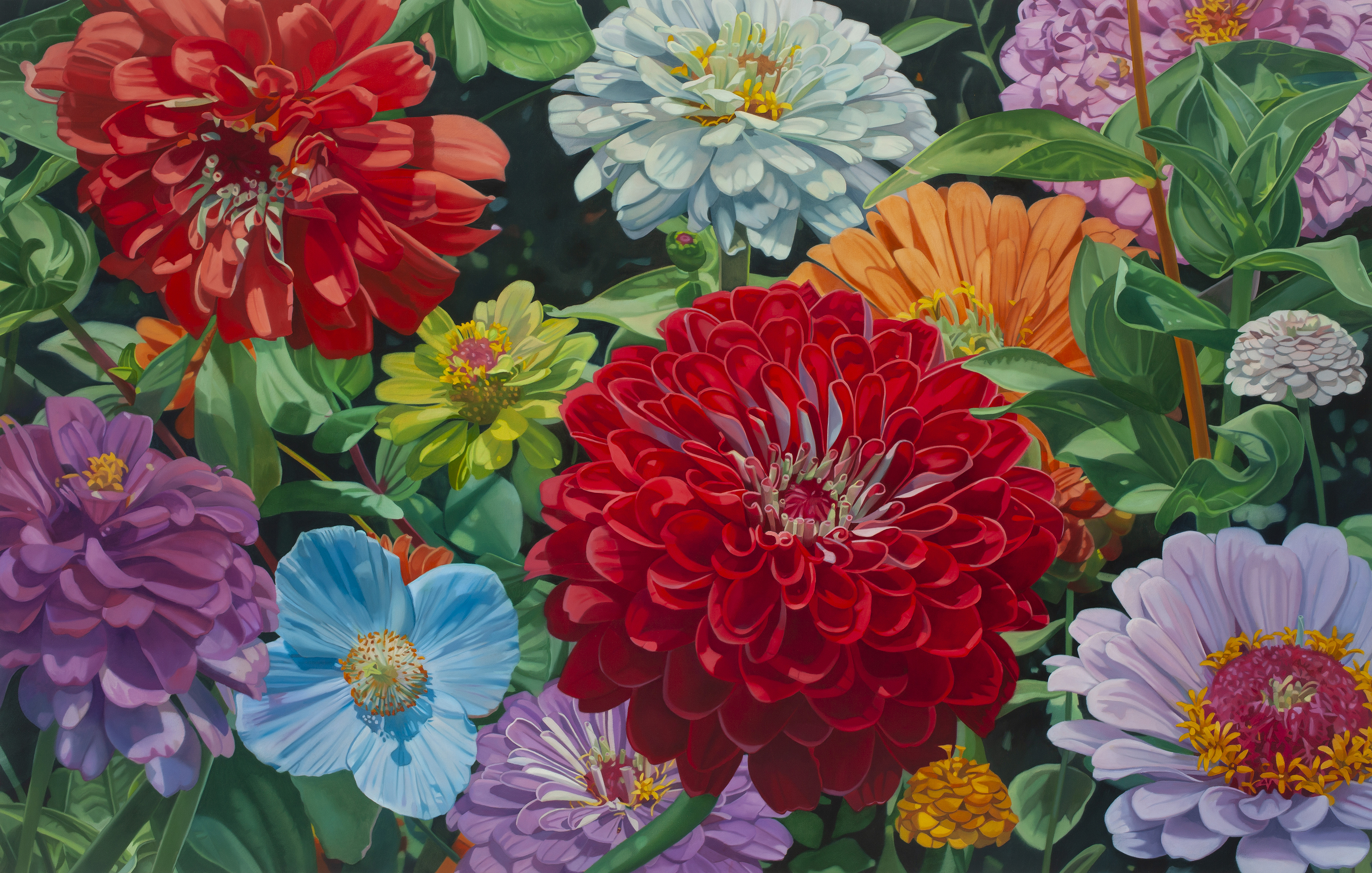
Beth Edwards, Garden IX, 2022, oil on canvas, 42" x 66"
Beth Edwards received her BFA from Tyler School of Art and her MFA from Indiana University. She is represented by the David Lusk Gallery in Memphis and the Tory Folliard Gallery in Milwaukee. Her work is in numerous public and private collections including the Tullman Collection in Chicago, the Huntsville Museum of Art in Alabama, the Brooks Museum of Art in Memphis and the Tennessee Arts Commission in Nashville. Her work was included three times in New American Paintings and featured on the cover twice. She has been a fellow at the MacDowell and Yaddo artist colonies and was the recipient of an Ohio Arts Council Individual Artist Fellowship and an ArtsMemphis Arts Accelerator Grant. In 2016, she was the recipient of the Emmett O’Ryan Award for Artistic Inspiration given by ArtsMemphis.
Wesley Roden is the Program Associate at Tri-Star Arts and received a BFA in Painting from the University of Tennessee, Knoxville in 2023. Based in Knoxville, he currently works in digital and mixed media in a continually evolving practice.
* images courtesy of the artist
